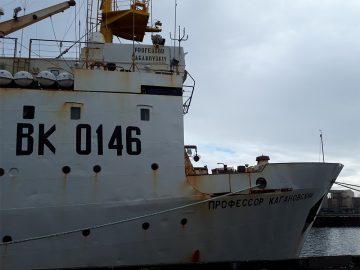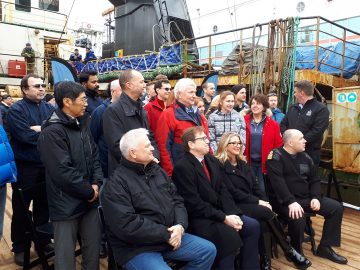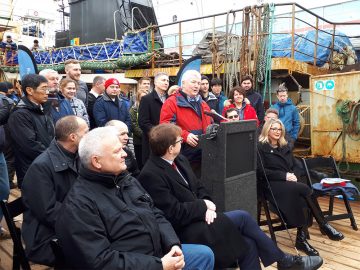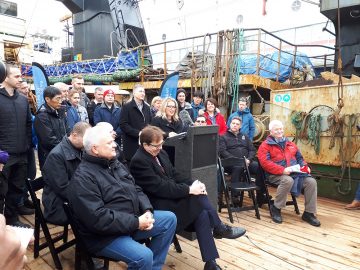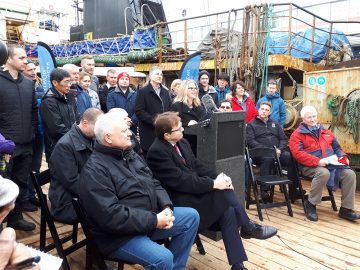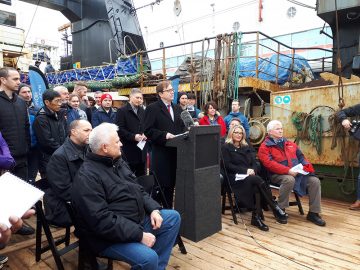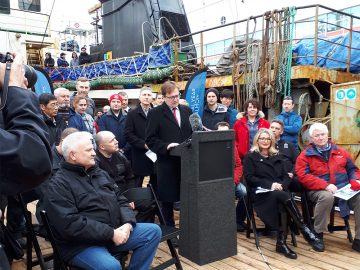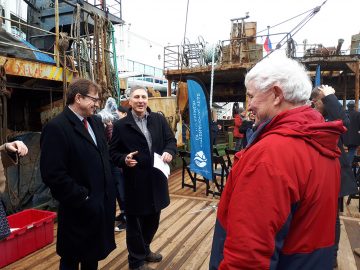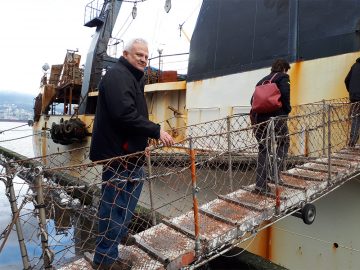Greater conservation efforts needed to protect Galápagos bird populations, a new study shows
Researchers found that unless current conservation measures are increased, the birds’ future conservation is precarious.
Research vessel
Professor Kaganovskiy
Photos with the Ministers
Research expedition gather for a photo with the Ministers
Dr. Dick Beamish
Fisheries and Oceans Canada Scientist Emeritus, Dr. Dick Beamish
BC Minister of Agriculture
The Honourable Lana Popham
Minister Popham
The Honourable Lana Popham
Addressing the media
The Honourable Jonathan Wilkinson
Minister Wilkinson talks
Minister of Fisheries, Oceans and the Canadian Coast Guard
Dignitaries aboard the vessel
(l to r): The Honourable Jonathan Wilkinson, Minister of Fisheries, Oceans and the Canadian Coast Guard, shares a laugh with Mark Saunders, Director, International Year of the Salmon, North Pacific Anadromous Fish Commission (IYS-NPAFC), and Dr. Dick Beamish, Fisheries and Oceans Canada Scientist Emeritus.
Evgeny Pakhomov boards RV Professor Kaganovskiy
Chief Scientist boards the research vessel

